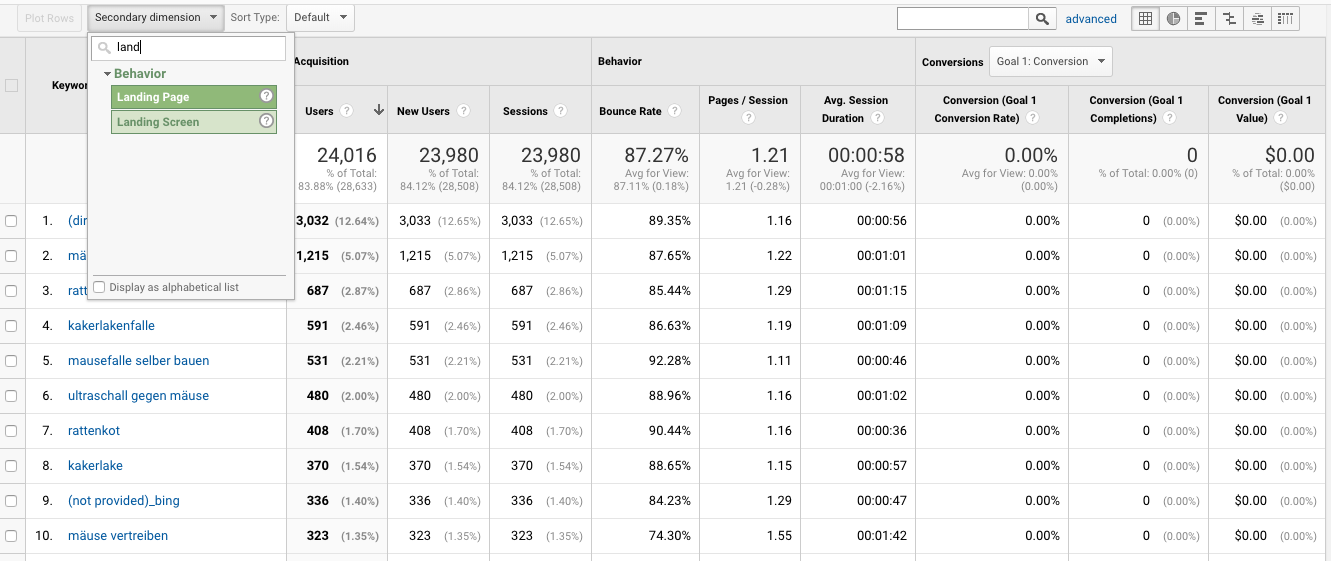Improving Data Precision: Google Analytics Secondary Dimension Insights
Improving Data Precision: Google Analytics Secondary Dimension Insights
Blog Article
Opening the Power of Secondary Dimension Analytics for Boosted Data Insights and Decision-Making
In the realm of data analytics, primary measurements often take the limelight, yet the real depth of insights exists within the world of second measurements. By utilizing the power of secondary dimension analytics, companies can introduce concealed patterns, uncover relationships, and remove a lot more significant conclusions from their information.
Relevance of Additional Dimensions
Exploring the value of additional dimensions in analytics reveals the surprise layers of data insights crucial for informed decision-making in numerous domains. Secondary dimensions offer a much deeper understanding of main data by supplying extra context and perspectives. By including additional dimensions right into analytics, organizations can draw out a lot more comprehensive and nuanced insights from their datasets.
One trick value of second dimensions is their capacity to sector and categorize main information, enabling a much more detailed analysis of details subsets within a dataset. When looking at the information as a whole, this segmentation allows organizations to identify patterns, trends, and outliers that may not be apparent. Additionally, second dimensions assist in revealing correlations and reliances in between various variables, causing even more accurate forecasting and anticipating modeling.
Additionally, additional measurements play an essential function in improving information visualization and coverage. By including second measurements to visualizations, such as graphs or charts, analysts can create much more interesting and informative depictions of information, facilitating much better interaction of findings to stakeholders. Generally, the combination of secondary measurements in analytics contributes in opening the complete potential of data and driving evidence-based decision-making.
Key Benefits of Making Use Of Second Measurements
Using second measurements in analytics uses organizations a critical advantage by augmenting the deepness and granularity of data understandings. By dissecting information utilizing second measurements such as time, location, tool type, or customer demographics, organizations can reveal patterns, trends, and relationships that may or else remain concealed.
In addition, the usage of second dimensions boosts the context in which primary information is interpreted. It supplies an extra extensive sight of the relationships in between different variables, allowing companies to make educated decisions based upon an extra holistic understanding of their information. In addition, secondary dimensions promote the identification of outliers, abnormalities, and locations for optimization, ultimately resulting in extra effective techniques and boosted end results. By leveraging second dimensions in analytics, organizations can harness the complete possibility of their data to drive better decision-making and accomplish their organization purposes.
Advanced Data Analysis Techniques
A deep study advanced data analysis techniques reveals sophisticated methods for extracting important insights from complex datasets. One such technique is artificial intelligence, where algorithms are employed to identify patterns within data, anticipate results, and make data-driven decisions. This method allows for the automation of analytical version structure, making it possible for the handling of big volumes of data at a quicker speed than conventional methods.
Another advanced strategy is anticipating analytics, which utilizes statistical formulas and equipment discovering techniques to forecast future results based on historical data. By evaluating fads and patterns, organizations can expect client behavior, market fads, and prospective risks, empowering them to make aggressive decisions.
Furthermore, message mining and belief analysis are beneficial strategies for drawing out understandings from disorganized data resources such as social networks remarks, client reviews, and study reactions. By analyzing text navigate to this site information, companies can understand customer viewpoints, identify arising trends, and boost their product and services based upon feedback.
Enhancing Decision-Making Via Secondary Measurements

Enhancing decision-making with second dimensions enables organizations to make more notified and targeted critical choices. For example, by segmenting client information based upon secondary dimensions like buying background or interaction degrees, firms can customize their marketing methods to details target market segments, resulting in enhanced conversion prices and client satisfaction. Additional dimensions can help identify correlations and partnerships in between various variables, allowing organizations to make data-driven decisions that drive development i loved this and productivity.
Carrying Out Additional Measurement Analytics
When including additional measurements in analytics, organizations can open deeper understandings that drive calculated decision-making and enhance general performance. This involves understanding the certain questions the company seeks to respond to and the data points called for to address them.

Moreover, companies ought to take advantage of progressed analytics tools and innovations to simplify the process of integrating second measurements. These tools can automate data handling, evaluation, and visualization, permitting organizations to concentrate on analyzing insights rather than hands-on information manipulation.
Conclusion
In conclusion, secondary dimension analytics play a crucial role in boosting information understandings and decision-making procedures. By making use of advanced information evaluation methods and carrying out additional dimensions efficiently, organizations can open the power of their information to drive strategic business choices.
In the realm of data analytics, key measurements usually take the limelight, yet the true depth of insights exists within the world of additional dimensions.Making use of additional dimensions in analytics offers companies a strategic advantage by increasing the deepness and granularity of data insights. By leveraging additional measurements in analytics, organizations can harness the full capacity of their information to drive better decision-making and achieve their service purposes.
Implementing data validation processes and routine audits can assist keep information quality and reliability.
By utilizing advanced data analysis strategies and carrying out secondary measurements effectively, companies can unlock the power of their data to drive strategic service decisions.
Report this page